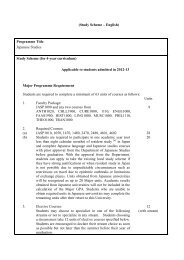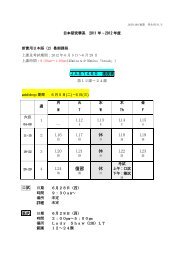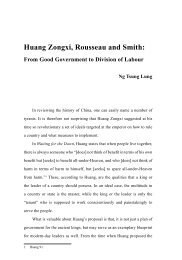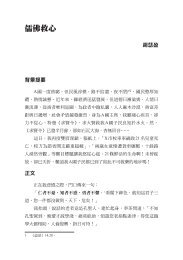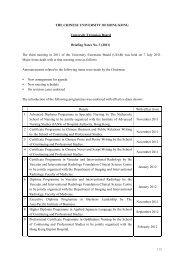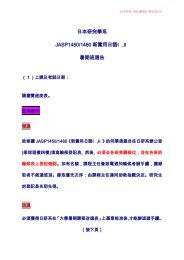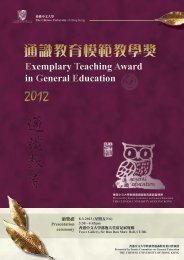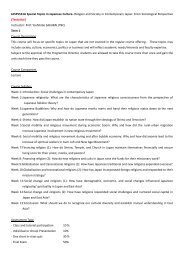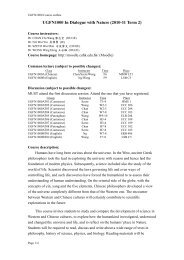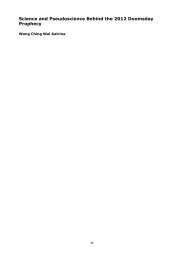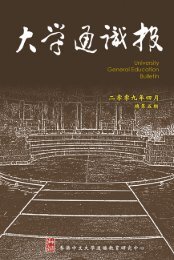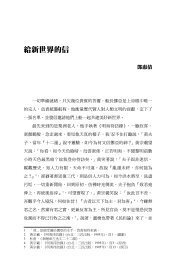ä¸è¼å ¨æ¸ - The Chinese University of Hong Kong
ä¸è¼å ¨æ¸ - The Chinese University of Hong Kong
ä¸è¼å ¨æ¸ - The Chinese University of Hong Kong
You also want an ePaper? Increase the reach of your titles
YUMPU automatically turns print PDFs into web optimized ePapers that Google loves.
22 Special Topic: Assessment in <strong>University</strong> General Education Program<br />
students to receive information on a given subject. Likewise, instructors can<br />
record the number <strong>of</strong> questions raised by students in a recitation or discussion<br />
section <strong>of</strong> a course, or the number <strong>of</strong> completed homework assignments to<br />
quantify evidence at the “responding” level <strong>of</strong> the hierarchy. <strong>The</strong> majority<br />
<strong>of</strong> affective learning outcomes that faculty seem concerned with and find<br />
interesting, however, tend to occur at higher levels in the affective taxonomy.<br />
Thus, they are less amenable to direct assessment, as they reflect internal<br />
states such as attitudes, dispositions, or values. That is where a variety <strong>of</strong><br />
indirect assessments become crucial for the assessment <strong>of</strong> affective ILOs.<br />
Indirect Assessment <strong>of</strong> Affective Learning Outcomes<br />
Some affective learning outcomes (e.g., attitudes, values) simply cannot<br />
be measured directly because they are internal states that exist only in the<br />
minds <strong>of</strong> individual students. <strong>The</strong>se types <strong>of</strong> affective outcomes tend to be<br />
measured indirectly, as the expression <strong>of</strong> internal states, through the students’<br />
thoughts and actions. <strong>The</strong> need to infer covert behaviors (e.g., feelings,<br />
attitudes, dispositions) from observed actions or to use completely indirect<br />
(non-observable) methods <strong>of</strong> assessment (e.g., self-report inventories) may be<br />
unfamiliar to many faculty. In fact, for some faculty, particularly those trained<br />
in the “hard sciences,” the concept <strong>of</strong> indirect measurement raises extreme<br />
skepticism and a tendency to discount the validity <strong>of</strong> affective learning<br />
altogether. Nevertheless, psychologists, sociologists, market researchers, and<br />
other social scientists have long established a tradition <strong>of</strong> measuring attitudes<br />
and dispositions, which must now be shared across all <strong>of</strong> academia.<br />
<strong>The</strong> information gathered for conducting an indirect assessment <strong>of</strong><br />
affective learning outcomes can come from a variety <strong>of</strong> sources, depending<br />
on the nature <strong>of</strong> the affective ILO. <strong>The</strong>se sources include the self (e.g., an



